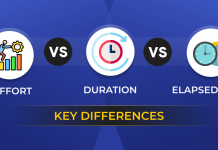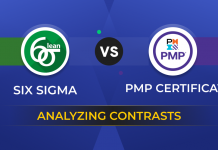
Group decision-making technique is a kind of participatory process in which multiple individuals act collectively, analyze problems or situations, evaluate alternative ways of action, and select alternative solutions. The number of people involved in group decision-making often ranges from two to seven. The individuals in a group may be demographically similar or quite diverse.
Group Decision-Making Technique
Decision-making groups may be relatively informal in nature, or formally designated and charged with a specific goal. The process used to arrive at decisions may be unstructured or structured. The nature and composition of groups, their size, demographic makeup, structure, and purpose, all affect their functioning to some degree. The external contingencies faced by groups (time pressure and conflicting goals) impact the development and effectiveness of decision-making groups as well.
In organizations many decisions of consequence are made after some form of the group decision-making process is undertaken. However, groups are not the only form of collective work arrangement. Group decision-making should be distinguished from the concepts of teams, teamwork, and self-managed teams. Although the words teams and groups are often used interchangeably, scholars increasingly differentiate between the two. The basis for the distinction seems to be that teams act more collectively and achieve greater synergy of effort.
Below are a few specific differences between decision-making groups and teams:
- The group has a definite leader, but the team has shared leadership roles
- Members of a group have individual accountability; the team has both individual and collective accountability.
- The group measures effectiveness indirectly, but the team measures performance directly through their collective work product.
- The group discusses, decides, and delegates, but the team discusses, decides, and does real work.
Group Decision-Making Techniques in Project Management
Group decision-making is a participatory process wherein members of the team collectively analyze problems and look for solutions together. In Project Management, group decision-making is usually organized by the leader. The members of the group have collective accountability for the decisions that they have created. The group is also responsible for delegating tasks that have been agreed on by the team.
There are many ways in which group decision-making is established. The group decision-making techniques are an assessment process that presents many alternatives in the form of future actions. This particular technique engages each team member to contribute to the decision-making process.
Methods for Effective Group Decision-Making Techniques
There are different types of group decision-making techniques and these techniques are used to create, classify as well as prioritize the product requirements. Below are the different methods used in reaching a group decision.
- Unanimity: This decision is achieved when everyone in the team agrees on a single action. An example of reaching unanimity is the Delphi technique wherein a selective group of experts answer questionnaires and give feedback on the responses of each round of gathering requirements.
- Majority: The decision is obtained from more than 50% of the team members. To avoid a tie, it is important to have an uneven number of participants during the group decision-making.
- Plurality: Plurality is achieved when the largest block of the group decides when there is no majority during the voting. This is used when there are more than two options being nominated.
- Dictatorship: Dictatorship is when only one individual – usually the project leader – makes the decision for the entire group.
These types of group decision-making techniques can also be applied to the group creativity techniques in order to identify and determine the product requirements. This term is defined in the 6th edition of the PMBOK.
Conclusion
The process of group decision-making techniques is considered important because of the scope that it provides in making a decision. When an idea is compared and qualified through all these process groups and methods, it is deemed a valuable requirement. The process helps in filtering out the less important aspects and allows the project manager and his team to concentrate on those aspects which have high-level requirement value particularly. Hence, the process is given much importance.
Know more about Project Management best practices through Invensis Learning’s Project Management certification training on PMP Boot Camp Online Training, CAPM, PRINCE2, Project Management Fundamentals, etc.

















